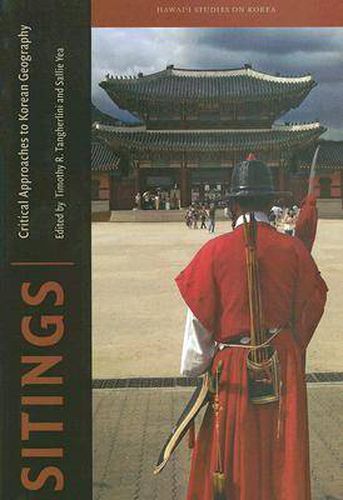Readings Newsletter
Become a Readings Member to make your shopping experience even easier.
Sign in or sign up for free!
You’re not far away from qualifying for FREE standard shipping within Australia
You’ve qualified for FREE standard shipping within Australia
The cart is loading…






Arranged around a set of provocative themes, the essays in this volume engage in the discussion from various critical perspectives on Korean geography. Part One,
Geographies of the (Colonial) City,
focuses on Seoul during the Japanese colonial occupation from 1910-1945 and the lasting impact of that period on the construction of specific places in Seoul. In Part Two,
Geographies of the (Imagined) Village,
the authors delve into the implications for the conceptions of the village of recent economic and industrial development. In this context, they examine both constructed space, such as the Korean Folk Village, and rural villages that were physically transformed through the processes of rapid modernization.The essays in
Geographies of Religion
(Part Three) reveal how religious sites are historically and environmentally contested as well as the high degree of mobility exhibited by sites themselves. Similarly, places that exist at the margins are powerful loci for the negotiation of identity and aspects of cultural ideology. The final section,
Geographies of the Margin,
focuses on places that exist at the margins of Korean society.
$9.00 standard shipping within Australia
FREE standard shipping within Australia for orders over $100.00
Express & International shipping calculated at checkout
Arranged around a set of provocative themes, the essays in this volume engage in the discussion from various critical perspectives on Korean geography. Part One,
Geographies of the (Colonial) City,
focuses on Seoul during the Japanese colonial occupation from 1910-1945 and the lasting impact of that period on the construction of specific places in Seoul. In Part Two,
Geographies of the (Imagined) Village,
the authors delve into the implications for the conceptions of the village of recent economic and industrial development. In this context, they examine both constructed space, such as the Korean Folk Village, and rural villages that were physically transformed through the processes of rapid modernization.The essays in
Geographies of Religion
(Part Three) reveal how religious sites are historically and environmentally contested as well as the high degree of mobility exhibited by sites themselves. Similarly, places that exist at the margins are powerful loci for the negotiation of identity and aspects of cultural ideology. The final section,
Geographies of the Margin,
focuses on places that exist at the margins of Korean society.